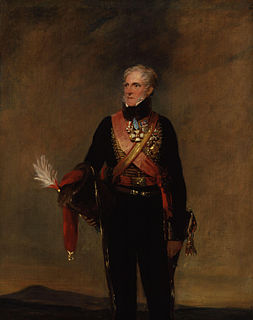
Henry William Paget, 1st Marquess of Anglesey, styled Lord Paget between 1784 and 1812 and known as the Earl of Uxbridge between 1812 and 1815, was a British Army officer and politician. After serving as a member of parliament for Carnarvon and then for Milborne Port, he took part in the Flanders Campaign and then commanded the cavalry for Sir John Moore's army in Spain during the Peninsular War; his cavalry showed distinct superiority over their French counterparts at the Battle of Sahagún and at the Battle of Benavente, where he defeated the elite chasseurs of the French Imperial Guard. During the Hundred Days he led the charge of the heavy cavalry against Comte d'Erlon's column at the Battle of Waterloo. At the end of the battle he lost part of one leg to a cannonball. In later life he served twice as Master-General of the Ordnance and twice as Lord Lieutenant of Ireland.

HMS London was a two-decker 90-gun second-rate ship of the line of the Royal Navy, launched on 28 September 1840 at Chatham Dockyard.

Admiral Lord Clarence Edward Paget was a British naval officer, politician, and sculptor.

HMS Raleigh was an unarmoured iron or "sheathed"-masted frigate completed in 1874. She was one of a series of three designed by Sir Edward Reed. The other two iron-hulled frigates of independent design were HMS Inconstant and HMS Shah. The Controller originally intended to build six of these big frigates, but only three were ordered in view of their high cost. They retained the traditional broadside layout of armament, with a full rig of masts and sails. Although widely believed to be named after Sir Walter Raleigh, the ship was in fact named for George of Raleigh.

HMS Inconstant was an unarmored, iron-hulled, screw frigate built for the Royal Navy in the late 1860s. Upon completion in 1869, she was the fastest warship in the world and was assigned to the Channel Squadron. Two years later the ship was transferred to the Detached Squadron for a brief time before she was paid off into reserve in 1872. Inconstant was recommissioned in 1880 for service with the Flying Squadron that circumnavigated the world in 1880–82. On the return voyage, the ship was diverted to Egypt during the Anglo-Egyptian War of 1882 and played a minor role supporting operations ashore. She was reduced to reserve again after her return and was served as an accommodation ship in 1897. Inconstant was hulked in 1904 and became a training ship in 1906. She continued in that role, under a variety of names, until she was sold for scrap in 1955 and subsequently broken up, the second-to-last surviving Pembroke-built warship in existence.

Admiral Sir George Greville Wellesley was a Royal Navy officer. As a junior officer he took part in the capture of Acre during the Oriental Crisis in 1840 and, as Captain of HMS Cornwallis in the Baltic Fleet, he took part in the Bombardment of Sveaborg in August 1855 during the Crimean War. He went on to be Commander-in-Chief of the North America and West Indies Station and then Commander-in-Chief of the Channel Squadron but was relieved of the latter post by a court-martial after an incident in which an armoured frigate, which had been under his command at the time, ran aground at Pearl Rock off Gibraltar in July 1871. He was appointed First Naval Lord in November 1877 and in that capacity he secured a considerable increase in naval construction, for example on the Colossus-class battleships, although some of these ships were of doubtful quality.
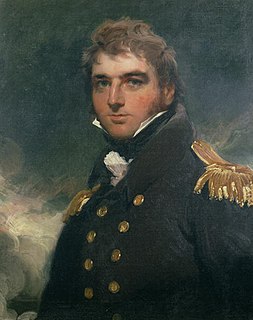
Vice-Admiral Sir Charles Paget GCH was a British sailor who also became a liberal politician and Member of Parliament.

HMS Nile was a two-deck 90-gun second-rate ship of the line of the Royal Navy, launched on 28 June 1839 at Plymouth Dockyard. She was named to commemorate the Battle of the Nile in 1798. After service in the Baltic Sea and the North America and West Indies Station, she was converted to a training ship and renamed HMS Conway, surviving in that role until 1953.

Sibylle was a 38-gun Hébé-class frigate of the French Navy. She was launched in 1791 at the dockyards in Toulon and placed in service in 1792. After the 50-gun fourth rate HMS Romney captured her in 1794, the British took her into service as HMS Sybille. She served in the Royal Navy until disposed of in 1833. While in British service Sybille participated in three notable single ship actions, in each case capturing a French vessel. On anti-slavery duties off West Africa from July 1827 to June 1830, Sybille captured numerous slavers and freed some 3,500 slaves. She was finally sold in 1833 in Portsmouth.
Admiral Richard Laird Warren was a Royal Navy officer who went on to be Commander-in-Chief, The Nore.
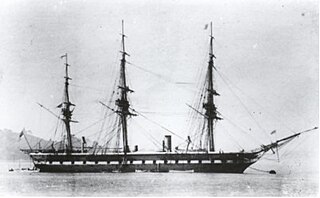
HMS Undaunted was a wooden screw frigate, the fifth ship of the name to serve in the Royal Navy.

HMS Andromeda was a 32-gun Hermione-class fifth rate frigate of the Royal Navy. She was laid down in 1781 and launched in 1784. She was commissioned for the first time in 1788 when Captain Prince William Henry took command of her and sailed for the West Indies. Prince William Henry paid her off in 1789 and she was not commissioned again until 1790 in response to the Spanish Armament. In 1792 Andromeda joined the Royal Navy's Evolution Squadron in the English Channel before sailing for the Leeward Islands where she stayed until the end of 1793 when Captain Lord Northesk brought her home. She was refitted for much of 1794 before in September joining the Downs Station. Captain William Taylor assumed command in 1795, briefly sailing her to Newfoundland before returning to the North Sea Fleet in 1796. She stayed here for 3 years, seizing the 36-gun Batavian frigate Zefir in the Firth of Forth in March 1798 and participating in the Raid on Dunkirk in July 1800. After another period of service in the Leeward Islands Andromeda returned home at the Peace of Amiens and was laid up at Portsmouth Dockyard where she was broken up in September 1811.
The Flying Squadron was a Royal Navy squadron formed at least three times. Its first formation existed from June 1869-November 1870.

HMS Pandora was a 3-gun brig of the Royal Navy, in service from 1833 to 1862.
Admiral Byron Drury (1815–1888) was a British naval officer.

Admiral Francis Erskine Loch was a senior commander in the Royal Navy during the early 19th century. He served as naval aide-de-camp to Queen Victoria.
The English sailor and administrator Henry Worsley Hill was a Captain in the Royal Navy and Governor of the Gold Coast. He was the eldest son of Vice-Admiral Henry Hill (1775–1849) and Ann Worsley (1779–1805).jou ma
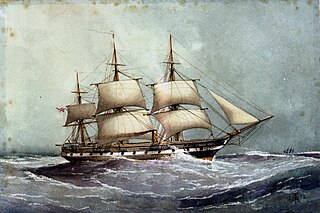
HMS Racoon was a Pearl-class steam corvette.
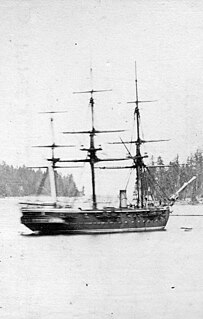
HMS Scout was a Pearl-class corvette in service 1857-77.

Alexander Boyle (1810–1884) was a Royal Navy officer whose most famous command was HMS Victory, Nelson's flagship.

















